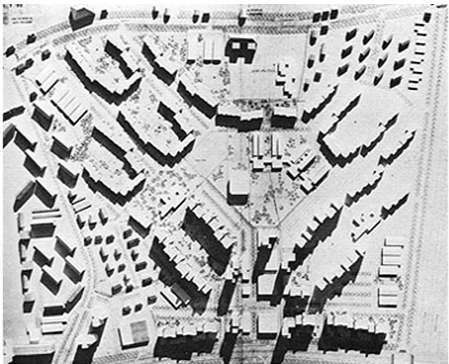Case Study

- first realised “ideal neighbourhood” in Ljubljana
- urban planning: Aleš Šarec, Janez Vovk
- architecture: Ilija Arnavtović, Aleksander Peršin
- duration of the project from 1964 to 1972
Neighbourhood ŠS 6 was the first realised self-contained urbanistic residential neighbourhood unit in Ljubljana, executed on principles of the “ideal neighbourhood”.
The fanning design of the neighbourhood, envisaged by urbanists Aleš Šarec and Janez Vovk, is defined by a hierarchically structured development, a grid of paths and elements of a traditional city, and it already represents an important deviation from Functionalist urbanism. Tall, 9-15 storey residential towers encircle the centre of the neighbourhood along a city arterial road, and the buildings grow lower as we move away from the main road, terminating in family-home development. The apartment blocks with shifted basic building units form articulated sequences, and the spaces between them are occupied by extensive park layouts planted with tall trees featuring children’s playgrounds and gardens and divided into more intimate sections by greened earth banks. The blocks and towers have a varied external appearance, which the architects, Ilija Arnavtović and Aleksander Peršin, created with emphasised open communications, discontinuities, and with the shifting and twisting of various building parts. In this way, they realised their vision of a contemporary apartment block as an open, permeable space, and instilled the neighbourhood with a new social aspect of collective living at the same time.